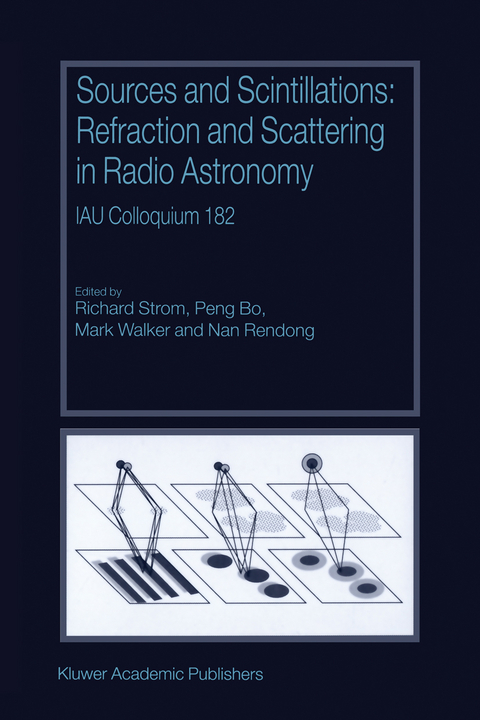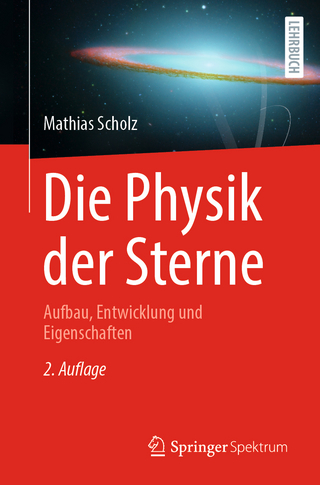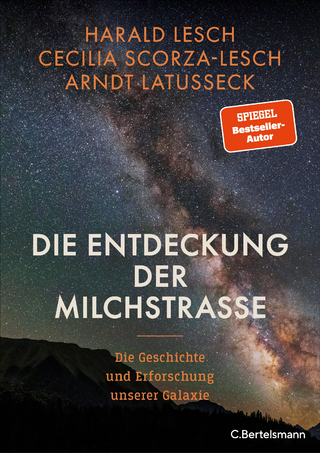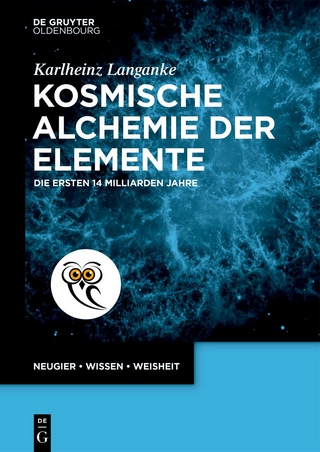
Sources and Scintillations
Springer (Verlag)
978-94-010-3879-9 (ISBN)
One: Introduction to Interstellar Scintillation.- Radio Sources and scintillation.- The galactic distribution of electron density microstructure inferred from radio scattering observations.- Incompressible MHD turbulence.- Pulsar scintillation: Overview and some recent results.- Two: Pulsars: Their Scattering And Intrinsic Properties.- The Parkes multibeam pulsar survey and interstellar scattering.- The study of scattering effects by VLBI observations of PSR 1329+54 with HALCA at 1650 MHZ.- Frequency structure of radio scintillations for several pulsars.- Optimizing pulsar searches against propagation effects.- Scattering of the low frequency pulsar radiation.- Scintillation observations of strong northem pulsars.- Giant radio pulses from pulsars.- Studying pulsar emission regions using interstellar scattering.- Pulsar investigation using interstellar scintillation.- Propagation of electromagnetic waves in pulsar magnetospheres.- Looking into pulsar magnetospheres.- Three: Intra-Day Variability, Gravitational Lensing and Polarization.- Radio intra-day variability: answers and questions.- Variability observations of a complete sample of flat-spectrum radio soures: preliminary results.- YSOP observations of the BL Lac object 2007+777.- Monitoring the microarcsecond quasar J1819+3845.- Multi-frequency studies of intrinsic intraday variability.- Examples of extreme intraday variability.- Multifrequency polarization variations in 0917+624.- Gravitational lensing.- ISS of polarized compact extragalactic radio sources.- Strong, variable circular polarization in PKS 1519-273.- The microarcsecond quasar J1819+3845: polarization observations and detailed lightcurve analysis.- Magnetic fields in quasar 3C147 on milliarcsecond scales.- Four: Extreme Scattering Events, Distributionof Material and Ips.- Interpretation of extreme scattering events.- Extreme scattering events: an observational summary.- An ESE event for PSR 0329+54.- Interstellar scintillation and clouds of the interstellar turbulent plasma.- Interstellar scintillation studies of pulsars and distribution of scattering plasma in the local interstellar medium.- The radio luminosity ofpulsars and the distribution of interstellar electron density.- Magnetic fields in our galaxy: how much do we know?.- Investigations of AGNS by the interplanetary scintillation method.- IPS observations art Miyun Station, BAO.- VLA observations of angular broadening close to the sun.- On post-SKA radio astronomy.- Australian research effort for the SKA.- Active adaptive arrays: the astron approach to SKA.- The FAST/SKA site selection in Guizhou Province.- Five-hundred meter aperture spherical telescope project.- Analysis for reftector aluminum mesh panels of five-hundred meter aperture spherical telescope.- Structural analysis of FAST reflector supporting system.- Modelling, simulation and testing of an optomechatronics design of a large radio telescope.- On the cable car feed support configuration for FAST.- Trying to enlarge the sky coverage of the FAST.- Extending the observable zenith angle of FAST using an offset feed.- The control system of the active main reflector for FAST.
| Zusatzinfo | VII, 265 p. |
|---|---|
| Verlagsort | Dordrecht |
| Sprache | englisch |
| Maße | 160 x 240 mm |
| Themenwelt | Naturwissenschaften ► Physik / Astronomie ► Astronomie / Astrophysik |
| ISBN-10 | 94-010-3879-1 / 9401038791 |
| ISBN-13 | 978-94-010-3879-9 / 9789401038799 |
| Zustand | Neuware |
| Informationen gemäß Produktsicherheitsverordnung (GPSR) | |
| Haben Sie eine Frage zum Produkt? |
aus dem Bereich


